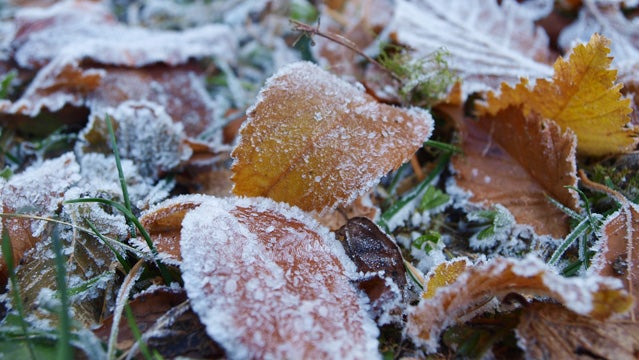No. Just be smart—frostbite is easier to prevent than to treat. When the body is exposed to cold temperatures, it wants to protect vital organs, which means decreasing circulation to non-vital areas, a.k.a. the appendages. A lack of warm blood plus cold temps causes extremities to freeze.
“Keep those toes and fingers extra warm and make sure your coverings are waterproof if conditions warrant,” advises Gordon Janow, director of programs for Seattle-based mountaineering school Alpine Ascents International. “Extremities are most prone to frostbite.”
According to a 2012 study by researchers at Ohio Northern University, “when temperatures are below 20 degrees Fahrenheit with winds of 20mph, it will take only minutes for frostbite to begin to damage the tissue … time decreased as wind speed increased and also as the outside temperature fell, with wind speed having a larger impact on the outcome.”
Researchers studied the effects of cold and wind on bare skin—a pinky finger, to be exact—and noted in their findings that “most people would not allow their hand to be exposed to these temperatures and conditions for a long enough period; it is unlikely that these conditions would cause damage unless there were some extenuating circumstances, such as in an emergency.” Basic moves such as rubbing the hands together, shielding them from wind, or placing them close to the body will delay frostbite.
And, perhaps most obviously, covering the hands is important. For maximum warmth, invest in a good pair of mittens instead of gloves (but be wary of decreased dexterity). “Mittens do a better job keeping your hands warm because they have shared heat from the four digits, which come in contact with each other verses being isolated in a glove,” says Brad Earnest, a triathlete and certified hand therapist at the Missouri Orthopaedic Institute.
If you don’t have mittens, you can always improvise. “Last Saturday when I was running, my hands got really cold the first mile, so I pulled my fingers and thumb out of each [glove] sleeve and made a fist with the glove still on my hand,” Earnest says. “My fingers were no longer cold.”
Other tips: “Remember that most body heat is lost through the head so even a thin hat or beanie is good to have when the early day warmer weather turns cold,” Janow says. Also, keep your skin dry and stay hydrated (plenty of fluids equals increased blood volume, which helps prevent frostbite). If you develop pain that lasts for more than a few hours or dark bluish-black areas under the skin, see a doctor immediately.


